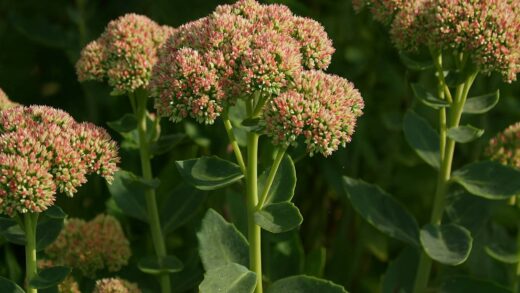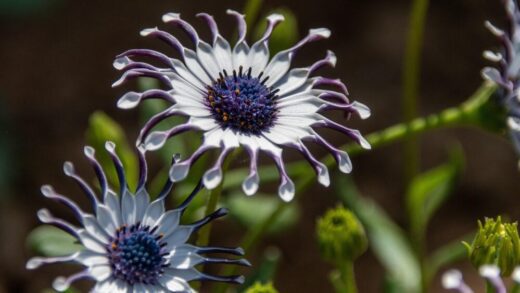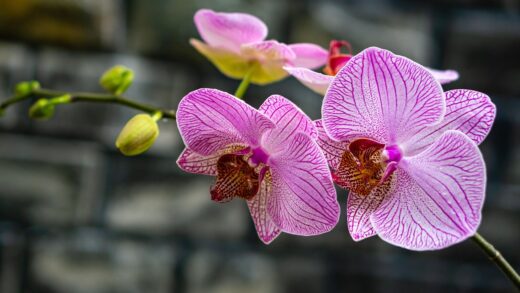Sunlight is the essential fuel that powers the vibrant life of a plumeria, directly dictating its ability to grow vigorously and, most importantly, to produce its iconic, fragrant blossoms. These tropical plants are true heliophiles, or sun-lovers, and their need for intense, direct light cannot be overstated. Providing insufficient light is one of the most common reasons for a plumeria’s failure to thrive and bloom. Understanding the critical role of sunlight and how to provide the optimal duration and intensity is fundamental to cultivating a healthy, floriferous plant that brings a touch of the tropics to your garden.
The fundamental role of full sun
Plumerias are fundamentally programmed to flourish under the bright, intense sun of their native tropical and subtropical habitats. They require a minimum of six to eight hours of direct, unfiltered sunlight each day to perform photosynthesis at a level sufficient to support not only their basic survival but also the energy-intensive process of flowering. A location that offers full sun exposure, especially during the morning and midday hours, is the ideal placement for these plants. Without this ample light, the plumeria will divert all its energy into vegetative growth, producing leaves in an attempt to create more surface area to capture what little light is available.
The intensity of the sunlight is just as important as the duration. The strong solar radiation is what triggers the hormonal and chemical processes within the plant that lead to the formation of an inflorescence, the specialized stalk from which the flowers emerge. Filtered or indirect light, even if it is for the entire day, simply does not provide the same quality or intensity of light energy that a plumeria needs to initiate its blooming cycle. Therefore, when choosing a spot, prioritize open areas away from the shade of large trees, buildings, or awnings.
This requirement for full sun directly impacts where plumerias can be successfully grown. In gardens, a south-facing or west-facing location that is unobstructed is typically the best choice. For potted specimens, this might mean placing them on a sunny patio, deck, or balcony. The ability to move a potted plumeria allows you to “chase the sun” throughout the seasons, ensuring it always receives its required daily dose of light, a significant advantage for gardeners in regions with changing sun angles throughout the year.
Ultimately, a plumeria’s flower production is a direct reflection of the light it has received. A plant that is situated in a shady or partially shaded location may produce large, healthy-looking leaves, but it will almost certainly disappoint when it comes to flowering. If your mature plumeria is not blooming, the first and most critical factor to assess and correct is its daily sunlight exposure. Often, the simple act of moving the plant to a sunnier spot is all that is needed to stimulate a profusion of blooms.
More articles on this topic
Optimal light duration for growth and blooming
To achieve the best possible results, a plumeria should be exposed to at least six hours of direct sun daily, but more is often better. Eight or more hours of sunlight will typically result in a more compact, robust plant with stronger stems and a much higher likelihood of prolific flowering. This extended period of direct light allows the plant to maximize its energy production, storing the excess carbohydrates that are necessary to fuel the development of multiple flower clusters throughout the growing season.
The timing of the sun exposure can also be a factor, particularly in extremely hot climates. While plumerias are heat-tolerant, the intense afternoon sun in arid or desert regions can sometimes be stressful, potentially leading to leaf scorch. In such environments, a location that provides direct morning and midday sun, followed by some light, dappled shade during the hottest part of the late afternoon, can be beneficial. However, for most temperate and subtropical climates, all-day sun exposure is perfectly suitable and highly desirable.
It’s also important to consider the entire growing season. The long days of late spring and summer provide the ideal light duration for plumerias to build up the energy reserves needed for flowering. As the days begin to shorten in late summer and autumn, the reduction in light duration is one of the natural cues that signals the plant to slow its growth and prepare for dormancy. This seasonal rhythm of light is integral to the plant’s annual life cycle.
For those attempting to grow plumerias indoors, replicating these light requirements is a significant challenge. A spot directly in front of a south-facing window is essential, but even this is often insufficient, especially during the shorter days of winter. To successfully grow and bloom a plumeria indoors, you will almost certainly need to supplement the natural light with high-output grow lights. These lights should be run for 12 to 14 hours a day to provide the intensity and duration of light needed to mimic a full day of tropical sun.
More articles on this topic
Recognizing the signs of insufficient light
The most obvious and frustrating symptom of inadequate light is a complete lack of flowers. A healthy, mature plumeria that consistently fails to produce blooms is very likely not receiving enough direct sunlight. The plant may look otherwise healthy, with green leaves, but it simply does not have the surplus energy required to engage in the reproductive effort of flowering. It is in survival mode, not a thriving mode, focusing all its resources on maintaining its foliage.
Another clear sign of insufficient light is a phenomenon known as etiolation, or “legginess.” The plant’s stems will become elongated, thin, and stretched out as they literally reach for a light source. The spacing between the leaf nodes on the stem will be greater than on a plant grown in full sun. This results in a weak, spindly structure that is less stable and less aesthetically pleasing than the compact, sturdy form of a sun-grown plumeria.
The foliage of a light-deprived plumeria can also provide clues. The leaves may be a paler shade of green compared to the deep, rich green of a plant receiving adequate sun. They might also be larger and thinner, as the plant tries to maximize the surface area of its solar panels to capture as much light as possible. While large leaves might seem like a good thing, in this context, they are a sign of stress and compensation for a suboptimal environment.
In severe cases of light deprivation, a plumeria may begin to shed its lower leaves. As the plant struggles to sustain itself, it will sacrifice its older, less efficient leaves to conserve energy. If you observe your plumeria dropping healthy, green leaves from the bottom of its stems during the active growing season, and you have ruled out watering issues, then a lack of sufficient light is the most probable cause of this stress response.
Acclimatizing plumeria to light changes
Acclimatization is the crucial process of gradually introducing a plumeria to a significant change in light intensity, and it is vital for preventing damage to the plant’s foliage. This is most important in the spring when you move a plant from its dark winter storage location or a protected indoor spot back out into the direct summer sun. A plant that has been in low-light conditions has leaves that are not adapted to intense ultraviolet radiation. Moving it directly into full sun will result in severe sunburn, which appears as large, bleached or brown, crispy patches on the leaves.
To acclimate your plumeria properly, start by placing it in a location that receives only bright, indirect light or a couple of hours of gentle morning sun. A spot under a high-canopied tree or on a covered porch is often ideal for the first few days. This initial step allows the plant to begin adjusting its physiology to the brighter outdoor conditions without being overwhelmed.
Over the course of one to two weeks, gradually increase the plant’s exposure to direct sunlight. Every few days, move the plant to a location that receives an additional hour or two of sun. You might start with just morning sun, then move to a spot that gets sun until midday, and finally transition it to its permanent, full-sun location. This slow and steady increase allows the leaves to thicken their protective cuticle layer and adjust their chlorophyll density to handle the intense light without burning.
The same principle of acclimatization applies, in reverse, when moving a plant indoors for the winter, although the risks are lower. Moving a plant from full outdoor sun directly into a low-light indoor environment can cause stress and lead to rapid leaf drop. While the plumeria will likely lose its leaves for dormancy anyway, a gradual transition over a week or two by moving it to progressively shadier outdoor spots first can make the change less of a shock to the plant’s system.


















